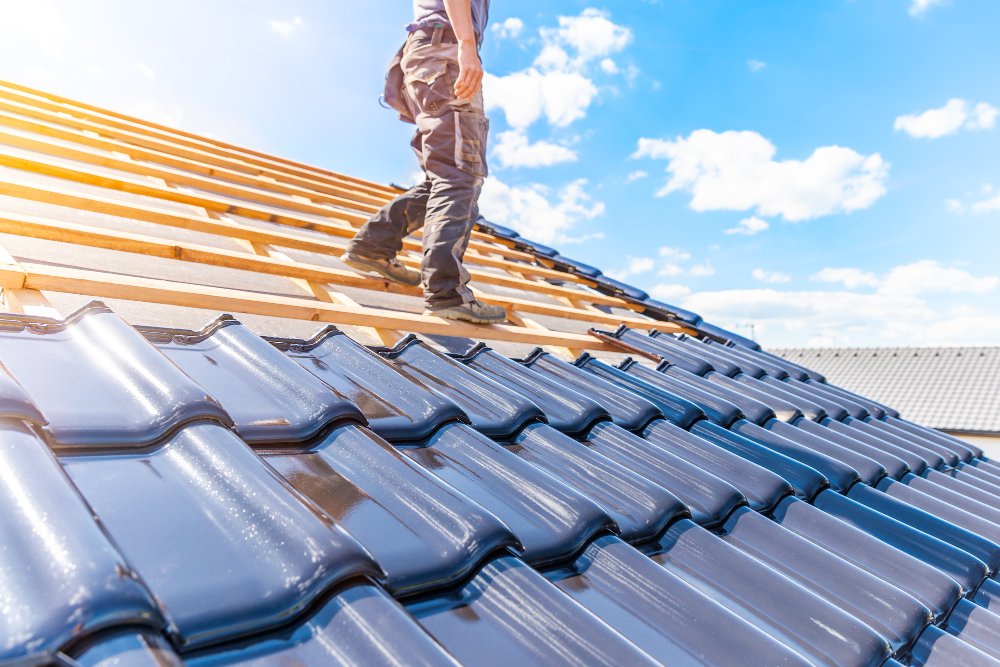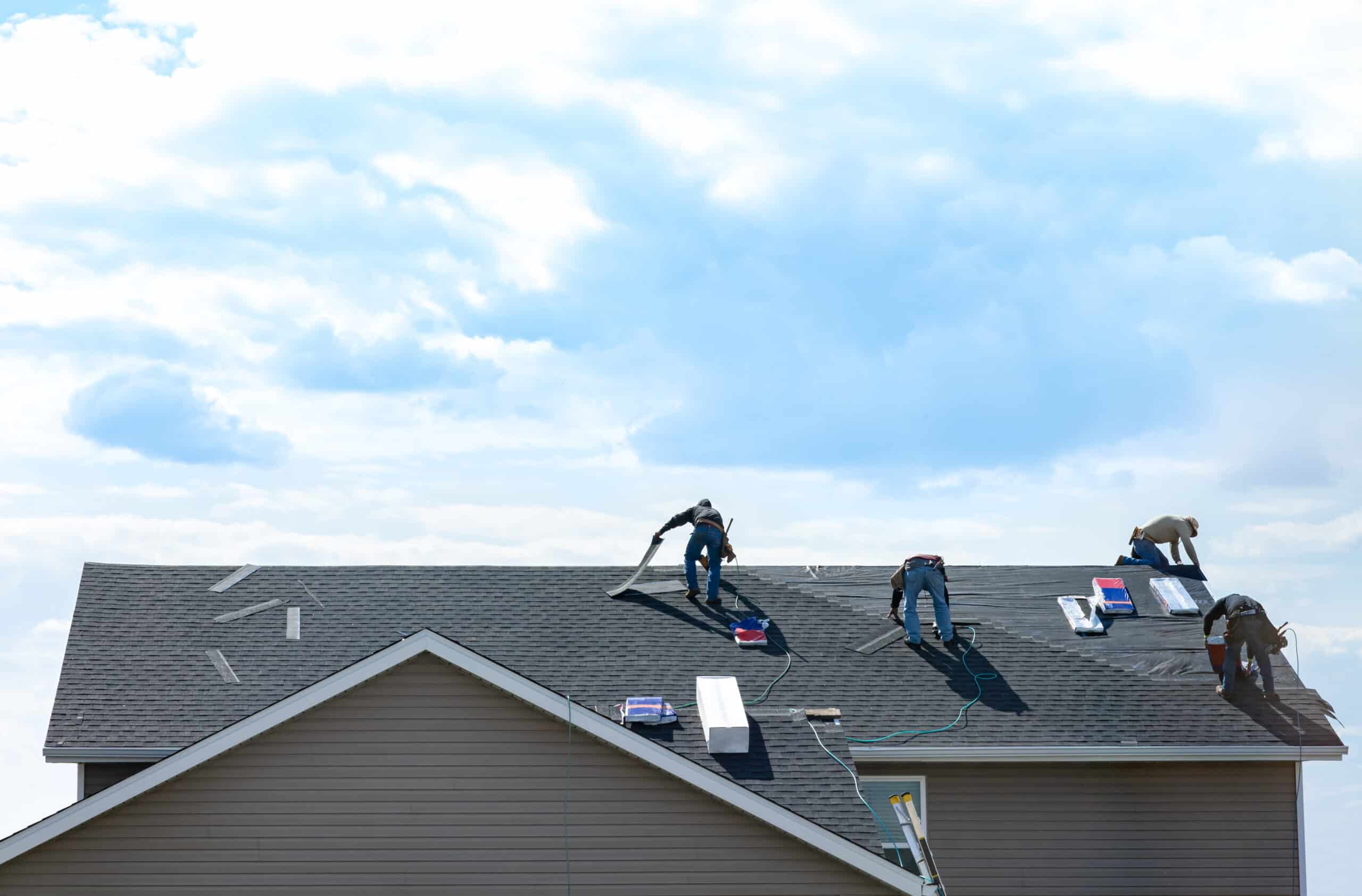A Comprehensive Guide to Effective Roof Covering Flat Roofing System Setup
The complexities of level roof installation need a careful strategy, beginning with a detailed understanding of different level roofing system types and the necessary materials required for optimal performance. An effective installment pivots not just on the option of materials but also on the prep work and execution of each action associated with the procedure. As we explore the critical points from prep work to maintenance, it ends up being noticeable that forgeting also small details can substantially impact the roof's longevity and performance. What details methods can guarantee a seamless setup that stands up to the test of time?
Understanding Apartment Roof Covering Kind
When thinking about level roof coverings, it is crucial to recognize the various kinds readily available, as each deals distinct advantages and downsides customized to particular demands. The most usual kinds of flat roofings consist of Built-Up Roof (BUR), Modified Bitumen, and Single-Ply membranes.
Built-Up Roof consists of numerous layers of asphalt and gravel, giving excellent toughness and weather condition resistance. It is particularly beneficial in areas prone to extreme weather conditions but may call for even more maintenance because of its complicated construction.
Customized Bitumen is a prominent option for its convenience of setup and flexibility. It usually employs a torch-applied or self-adhesive approach, which can be useful for quick repairs and lasting performance. Nevertheless, its life expectancy can be much shorter contrasted to BUR.
Single-Ply membranes, consisting of Thermoplastic Olefin (TPO) and Ethylene Propylene Diene Monomer (EPDM), are identified for their lightweight nature and power effectiveness. These materials are typically favored for business structures due to their cost-effectiveness and convenience of installation (Cleveland Roofing Specialists). They might not offer the very same degree of insulation as various other choices.
Each roof type requires mindful consideration based on climate, spending plan, and details task requirements.
Necessary Materials for Flat Roof Covering
A variety of essential products are critical for the effective installation of flat roof. The selection of products straight effects resilience, performance, and general effectiveness.
One of the main products is the roof membrane, which can be constructed from numerous substances such as polycarbonate polyolefin (TPO), ethylene propylene diene monomer (EPDM), or PVC. Each type uses one-of-a-kind benefits, consisting of UV resistance and versatility, which are crucial for long term efficiency.
In addition to the membrane layer, insulation materials play a considerable role in energy efficiency. Stiff foam boards or polyisocyanurate insulation are prominent selections, as they give outstanding thermal resistance and moisture management.
Furthermore, roof covering adhesives and sealers are important for guaranteeing a leak-proof installment. These products must be suitable with the picked membrane layer to avoid damage over time.
Preparing for Installation
Proper prep work is vital for a successful flat roof setup, as it lays the groundwork for a reliable and resilient roof covering system. Begin by carrying out a comprehensive examination of the existing roofing structure.
Following, collect all required devices and materials, making sure that they fulfill market criteria. This includes water-proof membrane layers, insulation, flashing, and fasteners. Acquaint yourself with the supplier's requirements, as adherence to these standards is crucial for guarantee functions.
Furthermore, guarantee that the workspace is free from particles and obstructions to facilitate secure and reliable installment. Consider weather conditions; stay clear of installment throughout heavy rain or extreme temperatures, which can influence material efficiency. Lastly, inform any owners of the building about the future job to ensure security and reduce disruptions. By taking these preparatory actions, you can improve the chance of an effective flat roofing system setup that satisfies both site link aesthetic and structural demands.
Step-by-Step Setup Process
With the groundwork established with thorough preparation, the following phase involves implementing the level roofing installment methodically. Begin by ensuring that the architectural deck is complimentary and tidy from particles. Next off, install a vapor obstacle to avoid moisture accumulation underneath the roof covering product. This step is important for maintaining the roofing system's honesty in time.
Complying with the vapor barrier installment, set insulation boards, ensuring they fit securely together to decrease thermal connecting. Secure the insulation with appropriate bolts based upon the roofing system type and regional structure codes. When the insulation is in area, it's time to apply the roof covering membrane layer. Depending on the selected product-- such as TPO, EPDM, or customized asphalts-- install the membrane layer according Extra resources to the supplier's specifications.
Guarantee appropriate overlap at sides and joints to develop a watertight seal. Make use of adhesives, mechanical fasteners, or warmth welding as called for. Install blinking around boundaries, vents, and any kind of roof covering infiltrations to enhance waterproofing. After installment, carry out a comprehensive evaluation to identify any prospective concerns prior to concluding the project, making sure a robust and reputable level roof covering system.
Upkeep Tips for Durability
Regular upkeep is necessary to make sure the longevity and performance of a flat roofing system. Among the main tasks is to perform routine examinations at the very least two times a year, ideally in springtime and autumn. During these examinations, look for indications of wear, such as sores, fractures, or pooling water, which can show underlying problems.

Ensuring appropriate water drainage is critical to avoid water buildup. Examine and clear gutters, downspouts, and scuppers to ensure unhampered water circulation. Additionally, examine seals around vents, skylights, and various other penetrations for any type of indicators of damage, applying caulk or sealant as needed to preserve a water tight obstacle.
Finally, consider professional upkeep solutions every few years for comprehensive maintenances. By adhering to these maintenance ideas, you can dramatically prolong the life of your level roof, ensuring it continues to be a reliable guard versus the aspects.
Final Thought
Efficient level roof setup requires a methodical technique including complete inspections, material selection, and precise preparation. Complying with the outlined actions throughout the setup procedure makes sure the appropriate application of roof membrane layers and insulation while boosting waterproofing via efficient flashing setup. Additionally, carrying out regular upkeep methods significantly adds to the long life of the roof. By following these guidelines, a reputable and sturdy flat roofing option can be achieved, qualified of holding up against numerous environmental conditions.
The ins and outs of flat roof covering setup demand a thorough approach, beginning with a thorough understanding of different level roofing system types and the essential materials needed for optimum efficiency.Appropriate prep work is necessary for an effective flat roof covering installation, as it lays the groundwork for a efficient and durable roofing system. After installation, conduct an extensive inspection to identify any type of possible problems before ending the project, making sure a trusted and robust flat roof system.
